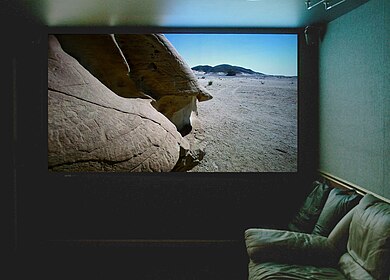If you've been thinking of buying an HDTV this holiday season, but don't want to spend the cash up front, there's good news and bad news.
The good news is that major retailers are offering some pretty good deals. Best Buy, for example, advertises no interest until January 2011 on HDTVs over $1000. Similar attractive financing is offered by Circuit City, Wal-Mart, and Dell.
The bad news about some of these offers, say experts, is that paying nothing up front for an expensive HDTV can end up being a bad deal for unqualified buyers. Financial experts warn that buyers lured into "money-saver" deals are apt to purchase a more expensive television than they can afford, and may end up spending more than they intended.
The HDTV deals available this holiday season vary from store to store, but most involve either no monthly payments for a certain period of time or no interest on payments made during a promotional period. To take advantage of the deals you have to sign up for the store's credit card.
I asked personal-credit experts to share their thoughts on what HDTV shoppers should be watching out for.
The Consumer Trap
If you can't afford the HDTV, then you shouldn't buy it, says credit expert Lynnette Khalfani-Cox, author of Zero Debt for College Grads.
Many people think that because they qualified for a zero-percent financing deal that means they can afford it, Khalfani-Cox says. "Credit card companies are not looking out for your best interest," she says.
Khalfani-Cox points out that, in some deals, if you don't pay for the HDTV within the promotional time period, you must pay interest as if it had been accumulating from the date you bought the HDTV.
For example, if you purchased a Sharp 37-inch Aquos LCD HDTV priced at $1450 from Circuit City and took advantage of its "no interest, no payments for 12 months" offer, then didn't pay for it within the promotional period, you would be subject to 23.99 percent interest. That's at least $194 in finance charges. If you violate the terms of the promotion by missing a payment, or by being late with a payment, your interest rate jumps to 29.49 percent--at least $242 in finance charges.
High Prices, Bait-and-Switch Tactics
One thing to keep in mind, says Jim Tehan with Myvesta, a nonprofit financial counseling organization, is that even if you do qualify for zero-percent financing, sellers often make up for the lost finance charges by jacking up the price of the product.
PC World took a look at several HDTVs offered as part of zero-percent financing promotions. We found identical models being sold for sometimes hundreds of dollars less at competing retailers without special offers.
"Don't think retailers aren't making money on promotions like these," Tehan says.
He adds that a trap consumers fall into is when they are approved for more money than expected. This can lead some people to spend much more than they originally intended on an HDTV.
Another dirty little secret of zero-percent financing is that it's a gimmick. Retailers use it to get you into the store, says Khalfani-Cox. She says zero-percent offers are used for bait-and-switch sales. Once the offer lures you into the showroom, a sales rep says you don't qualify, then tries to sell you the HDTV anyway, Khalfani-Cox says.
How to Get a Good Deal
Gerri Detweiler, credit advisor for Credit.com, says that zero-percent financing deals can be great for the right person.
"If you are going to take advantage of one of these types of deals, now is the time to do it," she says. The best promotions are right around the holidays, she says. "So you might as well take advantage of the best promotion you can," Detweiler says.
Khalfani-Cox agrees: "Zero-percent interest rates work very well for people with excellent credit ratings who always pay their bills on time and have an above-average income."
Detweiler advises buyers who haven't paid off their HDTV within the zero-percent financing timeframe to consider transferring the debt to a low-interest credit card.
However, Jim Hanson, vice president of the Credit Union National Association's Center for Personal Finance, says most people should avoid in-store gimmicks and come-ons altogether: "Even though it's tough, you should resist when a retail store offers zero-percent financing or 15 percent off your first purchase with credit approval."
Store credit cards typically have lower limits and higher fees. He suggests if you're dead set on buying a big-ticket item, you should consider getting a low-interest credit card from a credit union.
"It boils down to simple elementary advice that never changes," Hanson says. "Cash is always best. If you need a special promotion to buy an HDTV, you can't afford it."
















